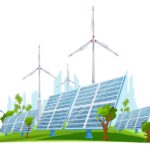India is on the cusp of a nuclear shift. For decades, nuclear power in the country has been synonymous with large, state-run plants that take years, sometimes decades, to build, and which come with significant financial and political baggage. But in recent months, the government has unveiled a new ambition – to bring small modular reactors (SMRs) into the mainstream of India’s energy mix. Unlike traditional nuclear reactors, SMRs are designed to be smaller, safer, and quicker to deploy. They can be factory-built in modules, shipped to sites, and scaled up as needed. Large nuclear plants are often beset by cost overruns and decade-long delays, which make them financially risky. SMRs, by contrast, can be deployed faster, in smaller units, and closer to demand centres. This makes them suitable for replacing old coal plants or powering energy-intensive industrial clusters. Globally, countries like the United States, Canada, and the UK have been exploring SMRs as the next generation of nuclear technology. India now wants to position itself not just as a buyer of this technology, but as a developer and exporter.
The most concrete step so far has been the announcement of the Bharat Small Modular Reactor (BSMR-200), a 200 MWe pressurised water reactor designed by the Bhabha Atomic Research Centre (BARC) and the Nuclear Power Corporation of India Limited (NPCIL). The concept design was completed earlier this year, and the government is also developing two other SMR models, a 55 MWe reactor and a 5 MW high-temperature gas-cooled reactor designed specifically for hydrogen production. The government has backed this effort with real money. The Union Budget for 2025 created a Nuclear Energy Mission, allocating INR 20,000 crore (over USD 2 billion) for SMR research, development, and deployment. The aim is to build at least five operational SMRs by 2033. If India sticks to this timeline, it could become one of the few countries to commercialise this technology within the next decade.
But what makes this initiative more groundbreaking than previous nuclear plans is the entry of private players. Nuclear energy has historically been the exclusive domain of the state, with laws tightly controlling ownership and operation. Now, NPCIL has invited private companies to co-develop SMRs, particularly for captive power generation in industrial sites. Reliance Industries, Adani Power, Tata Power, Hindalco Industries, Jindal Steel & Power, and JSW Energy have all shown interest by collecting tender documents and signing non-disclosure agreements. Meanwhile, NTPC, India’s largest power utility, is exploring SMRs as replacements for its ageing coal-fired plants. For India, which has committed to reaching net-zero emissions by 2070, SMRs could provide a clean and reliable alternative to coal, particularly in regions where renewable energy alone may not be sufficient. The government also sees a role for SMRs in producing green hydrogen, a key pillar of its future energy strategy. Equally important is the geopolitical angle. If India succeeds in developing indigenous SMR technology, it could become an exporter to other emerging economies facing similar energy challenges. Countries in Africa, Southeast Asia, and even parts of Latin America are exploring nuclear options but cannot afford massive plants. However, the path is far from smooth.
Nuclear projects anywhere in the world face three persistent problems: cost, regulation, and public acceptance. SMRs are often touted as cheaper, but the technology is still new, and the first generation of reactors is likely to be expensive. Financing remains a hurdle, especially if banks and investors are unsure about timelines and cost recovery. Regulatory issues are another challenge. India’s Atomic Energy Act currently centralises control over nuclear power, and the Civil Liability for Nuclear Damage Act imposes supplier liability that has long deterred foreign companies from entering the market. For private and international players to participate meaningfully, the government will likely need to amend these laws. Public perception also matters. While nuclear energy is carbon-free, safety concerns linger, particularly in a country where land conflicts and protests have delayed past nuclear projects.
References
Live Mint – Reliance, Adani, Railways, Greenko among participants in NPCIL’s small nuclear reactor project
IAEA – What are Small Modular Reactors (SMRs)?
India Today – Small Modular Reactor: How the world is watching India’s nuclear gamble
Image by brgfx on Freepik




